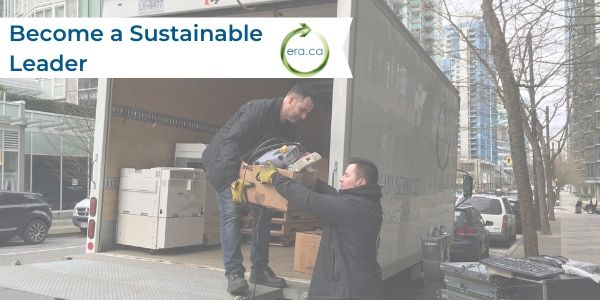360° sponsored content
What is the impact of keeping up with rapidly evolving technology? Here’s what happens when you throw away your old devices.
With new devices imploring consumers to buy every couple of months, can anyone be blamed for finding themselves in a pile of out-dated and unused technology? E-waste is a growing problem and it touches every corner of the earth in surprisingly disparate ways. As nonprofit organizations, what can we do to make progress on this important global issue? Although throwing something away can indeed seem like the quickest and cheapest option, it's worth asking if there are better solutions.
Soberingly, only 20% of the world's E-waste is properly recycled, leaving millions of tonnes of batteries, motherboards, OLEDs and forgotten memories to bake in the sun in landfills around the globe. This “great gap” has fueled entire industries built off of the movement of hazardous waste. In many cases, some of the world's lowest-paid workers find their way into these landfills to mine precious metals from discarded computing components. Continual exposure to lead and mercury make this form of renegade mining a dangerous and sometimes deadly profession.
Throughout the evolution of consumer technology there have been several flashpoints where production and adoption outpaced ethical and regulatory progress. Now, the average consumer is forced to calculate the cost-benefit of pollution in almost every purchase they make, with electronic goods offering the gravest Pandora’s Box. The black mirror in our pocket, while useful, has a lifecycle far longer than even the most viral meme its user can generate.
So what can be done? Given society’s rapid adoption of a smartphone-enhanced lifestyle, we find ourselves at yet another turning point, as each one of us on average contributes one new phone annually to the world's E-waste supply; not to mention the countless dongles, adapters and obsolete peripherals along with them.
How you can be part of the E-waste solution.
Active participation in a problem requires active participation in the solution. By advocating for and educating the public on the issue of E-waste, the Electronic Recycling Association (ERA) has become one of Canada’s most active participants in the fight against E-waste. The ERA is a global non-profit organization that has been reducing unnecessary electronic waste since 2004. The Association reduces adverse environmental contributions through electronic recycling and repurposing through the donation of electronics and other IT equipment - providing charitable groups and underprivileged communities with the equipment needed to participate in our digital economy.
With drop off locations and pick up services across Canada and the US, the ERA provides a meaningful way for organizations and individuals to deal with their old computer equipment in a safe and secure manner that matches or exceeds government standards. Plan an E-waste drive for your organization today!
ERA is offering Imagine Canada 360° readers a 10% discount on hard drive shredding and free pickup of IT equipment within their service areas. To access these discounts or for more information, contact info@era.ca and reference “Imagine Canada.”




